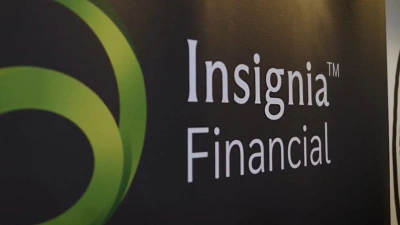From bush to the ‘burbs, ‘the Bendigo way’
Bendigo Investment Services(BIS) was formed in 2000 as a joint venture withIOOF. Both organisations owned 50 per cent.
The bank and the friendly society had formed a working relationship after IOOF sold its building society and branches to Bendigo in exchange for shares in the bank.
Almost a year ago Bendigo decided to broaden the range of products offered to its clients and grouped financial planning into a wealth management division.
This includedSandhurst Trustees, BIS, a separate financial planing firm Worley Securities and a debenture company, Victorian Securities, in Ballarat.
Sandhurst Trustees executive director Mike Hirst says the move grouped both product manufacturing and distribution into one central business.
Sandhurst now includes both funds management and trustee services and Worley still operates as a separate business to BIS.
“The move was to offer a broadened product range and services that met the needs of all our customers,” he says.
“We currently have about 750,000 customers with the bank. That is growing at about 10,000 new customers a month.
“We have a very committed customer base that is loyal to the bank.”
Hirst says the bank has a philosophy — successful customers and successful communities create a successful bank.
“We see wealth management as part of creating the community success, which obviously leads to a successful bank,” he says.
“To achieve that goal, we amalgamated all those services into wealth management and ran it as a stand-alone division within the bank.”
A result of this amalgamation was to buy out IOOF’s share in BIS.
“We felt distribution was our role as it was our customer base we were serving,” Hirst says.
“Our customers also felt happier dealing with a business that was 100 per cent owned by the bank.”
The wealth management division still has a strong working relationship with IOOF, using its master trusts (both retail and wholesale) and using its funds management expertise to administer some of the newer Sandhurst fund management products.
Distribution is expanding for BIS through the growth of the community banks and Bendigo’s own company-owned branches. The bank now has 22 branches in Western Australia, 56 in Queensland, 24 in New South Wales, as well as 119 in Bendigo’s home state, Victoria.
The trend recently has been for the bank’s branches to open in the suburbs of the major cities rather than rural areas, which were the initial focus.
However, this growth has not necessarily translated into great numbers of financial planning clients, says Sandhurst general manager advisory services Bruce Anderson.
“Because of the high up-front commitment by the community to creating a branch, it will take time for that to translate into new financial planing business,” he says.
“Financial planning is the second phase of banking in the community.
“It must be remembered that many of these branches are less than two years old and financial planning is only one of a number of products we are offering.”In Queensland, where many of the branches have emanated from former building society offices, financial planning is still an unknown quantity and that will take time to be accepted, says Anderson.
“In many Queensland branches, it has been a recent change and this has created some hurdles to getting our services across to the customer,” he says.
“But we see delivery of services as the next stage. It is evolution and not revolution.”
BIS planners are allocated a number of branches to service, depending on their size. Most planners service between two to six branches and visit them once a fortnight.
Originally, BIS had 21 financial planners in Victoria, but this has now grown to 24. There is still one planner in South Australia. In Queensland, there are 11 advisers each looking after between three and seven branches. There are also three centrally located paraplanners who produce plans within five days.
All planners are salaried with a performance bonus scheme.
If a planner becomes overloaded with work, another is then added to the area.
BIS is looking to appoint a planner for New South Wales, where it has opened a number of community bank branches.
However, Anderson admits it is hard recruiting the type of planner that will fit in with the bank’s customer service philosophy.
“What differentiates our financial planning model from other banks is it is demand-driven, not supply-driven,” he says.
“The planner also has to fit in with the cultural fit of the bank. There is a phrase here that talks about doing things ‘the Bendigo way’.”
Financial planners in the field also have to manage their own time, although they do have to report to an area manager.
They can sell a wide range of product and there is no incentive just to sell Sandhurst funds.
“Our products have to be better suited to the customer’s needs than our competitors’ products and the adviser must want to sell them,” Hirst says.
“Trail fees are conservative on our products, so there is no financial inducement to sell them.”
In the recentAssirtmarket share report, Sandhurst was sixth for inflows for the quarter ending December 2002. This was up from 10th in the previous quarter.
“We want to get our planners working for the clients rather than just selling product to earn trails.”
Planners joining BIS undertake a half-day induction course on the bank, which enables them to grasp the bank’s culture, Anderson says.
“The planner would then spend some time with their manager being introduced to the branches,” he says.
“As a result, we tend to recruit experienced planners.”
BIS expects planners to become CFP-qualified and it has an in-house education program to encourage bank staff to train to become financial planners.
“The program is to DFP standard. We prefer to recruit internally in the future, as the staff already understand the Bendigo culture and ways of doing things,” Anderson says.
“The cultural fit is very important and if anybody starts to step out of line, they will be reminded of ‘the Bendigo way’.”
Compliance is run in-house at BIS with a minimum of five plans reviewed every three months. During the year the planner has two desktop audits where the compliance team randomly selects five client files, plus two ‘in field’ audits where the compliance review takes place in the planner’s office.
If there is a consistent problem with plans, the planner will be reviewed every month.
“We use a coaching model and if there are concerns, the planner receives further guidance and training,” Anderson says.
Planners also have monthly professional development days run byIntegraTec.
Hirst says BIS is still a young organisation and that means the future development of the individual planner is limited at present.
“As we grow they will grow, but we are still thinking about how this will eventuate,” he says.
Recommended for you
A financial advice firm has been penalised $11 million in the Federal Court for providing ‘cookie cutter advice’ to its clients and breaching conflicted remuneration rules.
Insignia Financial has experienced total quarterly net outflows of $1.8 billion as a result of client rebalancing, while its multi-asset flows halved from the prior quarter.
Prime Financial is looking to shed its “sleeping giant” reputation with larger M&A transactions going forward, having agreed to acquire research firm Lincoln Indicators.
An affiliate of Pinnacle Investment Management has expanded its reach with a London office as the fund manager seeks to grow its overseas distribution into the UK and Europe.














